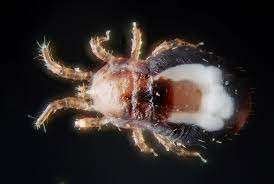
As a backyard chicken keeper, one of the most common challenges you may encounter is dealing with scaly leg mites in your flock. These pesky parasites can cause discomfort and distress to your chickens, affecting their overall health and well-being. Recognizing the signs of infestation, understanding the causes, and implementing effective remedies are crucial steps in maintaining a healthy and happy flock. In this comprehensive guide, we will explore everything you need to know about scaly leg mites, from their identification to natural and chemical treatments, as well as proactive prevention measures.
Understanding Scaly Leg Mites:
What are Scaly Leg Mites? Scaly leg mites, scientifically known as Knemidocoptes mutans, are tiny external parasites that burrow under the scales of a chicken’s legs and feet. As they feed on the skin tissues and keratin, the legs become inflamed, causing the scales to lift and form crusty and scaly lesions.
Life Cycle and Reproduction of Scaly Leg Mites: Scaly leg mites have a relatively short life cycle, typically ranging from 7 to 10 days. During this time, they lay eggs on the chicken’s legs, and the young mites hatch and continue to feed on the skin. The infestation can rapidly spread from bird to bird if not addressed promptly.
Types of Mites Affecting Chickens’ Legs: In addition to the common scaly leg mite, chickens can be affected by other types of mites that target different areas of their bodies. Understanding the various mites will help you differentiate between infestations and address them accordingly.
Identifying Infestations Through Visual Cues: Scaly leg mite infestations are often visually evident. Look for signs such as raised and crusty scales on the legs and feet, swollen joints, and an overall reduction in leg mobility. Affected chickens may also exhibit signs of discomfort and itchiness, leading to excessive scratching.
Causes and Risk Factors:
How Scaly Leg Mites Spread in Chicken Flocks: Scaly leg mites are highly contagious and can quickly spread from one chicken to another through direct contact. Infested birds can also leave mites in the coop and environment, making it easier for others to contract them.
Environmental Conditions That Facilitate Mite Infestations: Scaly leg mites thrive in damp and dirty environments, making poorly managed coops a breeding ground for infestations. Maintaining a clean and dry living space for your chickens is essential in preventing mite proliferation.
The Role of Other Birds and Wild Animals in Introducing Mites to the Coop: Wild birds and animals can introduce mites to your chicken coop, especially if they have access to the same area. As they interact with your flock, they may inadvertently spread mites, leading to infestations.
Risk Factors That Make Chickens More Susceptible to Infestations: Certain factors, such as age, breed, and stress, can make chickens more vulnerable to scaly leg mite infestations. Older birds and specific breeds may be more prone to contracting mites, and stress can weaken their immune system, making them susceptible to various health issues.
Symptoms of Scaly Leg Mites in Chickens:
Visible Signs on the Legs, Feet, and Toes: The primary indicator of scaly leg mites is the appearance of raised and roughened scales on the chicken’s legs, feet, and toes. As the mites burrow and feed on the skin, the legs become progressively more inflamed, causing the scales to lift and thicken over time. In severe infestations, the legs may appear significantly swollen and distorted.
Behavioral Changes in Affected Chickens: Chickens experiencing discomfort from scaly leg mites may exhibit behavioral changes. They might become restless, reluctant to walk or perch, and may spend more time preening their legs to relieve itching. Additionally, the pain and irritation may lead to decreased egg production and overall reduced activity levels.
Recognizing the Progression of Infestations: If left untreated, scaly leg mite infestations can worsen over time. The initial signs of raised scales may progress to the formation of crusty and scabby lesions, causing severe discomfort and mobility issues for the affected chickens.
Differentiating Scaly Leg Mites from Other Leg Issues: Several leg conditions can manifest similar symptoms, such as bumblefoot or injuries. Carefully examine the legs and feet of your chickens to rule out other potential causes of swelling and discomfort. If in doubt, consult a veterinarian for an accurate diagnosis.
See below and excellent visual from BackyardChickenCoops.com
Natural Remedies for Treating Scaly Leg Mites:
Herbal and Essential Oil Treatments to Suffocate and Repel Mites: Several herbal and essential oil treatments have proven effective in suffocating and repelling scaly leg mites. Olive oil, coconut oil, neem oil, and tea tree oil are commonly used natural remedies that can be applied topically to the affected areas.
Using Diatomaceous Earth and Other Natural Powders for Dust Baths: Diatomaceous earth, a fine powder made from fossilized algae, is an excellent natural remedy for controlling external parasites. Create a dust bath area in the coop with diatomaceous earth and allow your chickens to bathe in it regularly to help control mite infestations.
Incorporating Garlic and Other Supplements to Boost the Immune System: Garlic is known for its immune-boosting properties and can be added to your chicken’s diet to support their immune system. Consider mixing minced garlic with their feed or water to enhance their resistance to mite infestations and other health issues.
Promoting a Healthy and Well-Balanced Diet for Chickens’ Overall Well-Being: A well-balanced diet plays a crucial role in maintaining your chicken’s health and resilience. Provide a diet rich in essential nutrients, vitamins, and minerals to support their immune system and help them combat mite infestations more effectively.
Chemical Treatments for Severe Infestations:
Understanding the Role of Veterinary-Approved Chemical Treatments: In severe infestations or cases where natural remedies have not been effective, consulting a veterinarian for veterinary-approved chemical treatments is necessary. These treatments are designed to target and eliminate mites effectively.
Commonly Used Chemical Products for Mite Control: Common chemical products used for mite control in chickens include Ivermectin and Permethrin. These treatments come in various forms, such as sprays, powders, or pour-ons, and should be administered as directed by a professional.
Ensuring Safe and Proper Application of Chemicals: When using chemical treatments, safety is paramount. Follow the instructions provided by your veterinarian carefully and ensure that the product is suitable for poultry use. Observe withdrawal periods, if applicable, to prevent harmful residues in eggs or meat.
Weighing the Benefits and Risks of Chemical Treatments: Chemical treatments can be effective in severe cases, but they may also carry risks and side effects. Weigh the benefits and potential drawbacks carefully before opting for chemical solutions, and always prioritize the safety and well-being of your flock.

Creating a Mite-Unfriendly Environment:
Maintaining a Clean and Dry Coop to Deter Mite Infestations: Regular coop maintenance is essential in preventing scaly leg mites and other pest infestations. Keep the coop clean and dry by removing bedding and droppings regularly. Clean and disinfect the coop periodically to reduce the risk of mites taking hold.
Regular Mucking Out and Deep Cleaning Techniques: Perform deep cleaning of the coop at least once every few months. Remove all bedding, scrub surfaces with a poultry-safe disinfectant, and let the coop thoroughly dry before adding fresh bedding. This practice helps break the mite life cycle and reduces their numbers significantly.
Proper Bedding and Roost Management: Use clean and dry bedding material for your chickens. Avoid using materials that can trap moisture, as damp environments create an ideal breeding ground for mites. Regularly inspect and clean roosts to prevent mites from spreading while chickens sleep.
Providing Dust Baths and Natural Pest Control in the Coop: Offering dust baths for your chickens is an effective way to naturally control external parasites like scaly leg mites. Provide a shallow container with a mixture of dry dirt, sand, and diatomaceous earth, allowing chickens to bathe and dust themselves regularly.
Quarantine and Biosecurity Measures:
Importance of Quarantining New Birds Before Introduction: Whenever introducing new birds to your flock, quarantine them in a separate and isolated area for at least 30 days. This precautionary measure ensures that any potential mite infestations or diseases are detected and treated before the new birds join the rest of the flock.
Implementing Biosecurity Protocols to Prevent Mite Transmission: Establish strict biosecurity practices to prevent the introduction and spread of mites in your chicken coop. Limit access to your coop to only necessary personnel, and avoid sharing equipment between flocks.
Isolation and Treatment Procedures for Infested Chickens: In the unfortunate event of a mite infestation, isolate the affected chicken immediately to prevent the mites from spreading to others. Treat the infested bird promptly using appropriate natural remedies or consult a veterinarian for chemical treatments.
Preventing Scaly Leg Mites: A Proactive Approach:
Regular Health Checks and Monitoring for Early Detection: Conduct routine health checks on your chickens to detect any signs of scaly leg mites or other health issues. Early detection allows for prompt treatment and minimizes the risk of infestations spreading throughout the flock.
Isolating and Treating Affected Chickens Promptly: If you observe signs of scaly leg mites in any of your chickens, isolate the affected bird and begin treatment immediately. Addressing the issue promptly reduces the chances of mites spreading to other members of the flock.
Minimizing Interactions with Wild Birds and Other Potential Carriers: Limit interactions between your flock and wild birds or other animals that may carry mites. Reduce feed spillage and food left out in the open, as these attract wild birds that may introduce mites to the coop.
Creating a Comprehensive Flock Management Plan for Prevention: Develop a comprehensive flock management plan that includes regular coop maintenance, biosecurity measures, and health monitoring. By being proactive, you can significantly reduce the risk of scaly leg mite infestations.
Scaly Leg Mites
Scaly leg mites can be a challenging issue to tackle, but with proper identification, natural and chemical remedies, and proactive prevention measures, you can ensure a healthier and happier flock. Regular coop maintenance, biosecurity protocols, and attentive monitoring will help you keep your chickens safe from these pesky parasites. By prioritizing your chickens’ health and well-being, you can create a thriving and mite-free environment for your feathered friends to flourish. Happy chicken keeping!





